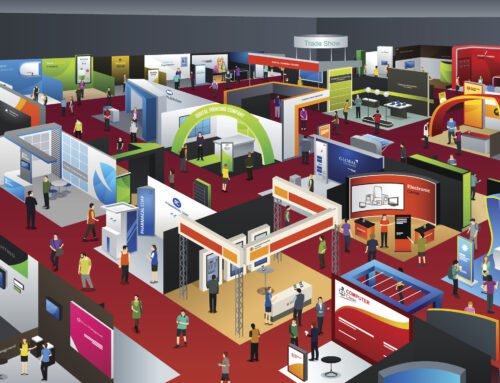Trade shows offer a unique opportunity to showcase your products or services and connect with potential customers face-to-face. However, simply having a booth is not enough. To make the most of your trade show presence, you need to have a strategic approach to sales. In this blog post, we will discuss the most effective way to make sales at a trade show booth.
1. Pre-show preparation
Preparation is key to success at a trade show. Here are some steps to take before the event:
- Know your target audience: Research the attendees and understand their needs, pain points, and preferences. This will help you tailor your sales approach and product demonstration to their specific requirements.
- Train your booth staff: Your booth staff should be well-informed and trained on your products or services. They should have a deep understanding of the features and benefits, and be able to answer any questions attendees may have.
- Set sales targets: Establish clear and measurable goals for the trade show, such as the number of sales or revenue you aim to achieve. This will help you stay focused and evaluate your success post-event.
2. Engage attendees with personalized interactions
Creating meaningful connections with attendees is crucial for making sales. Here’s how to do it effectively:
- Approachability: Train your booth staff to be approachable, friendly, and proactive in initiating conversations with attendees. Smile, make eye contact, and use open-ended questions to encourage dialogue and gather information about attendees’ needs.
- Active listening: Encourage your staff to actively listen to attendees. Understand and empathize with their pain points and challenges. This will help you position your product or service as a solution to their problems.
- Tailored product demonstrations: Customize your product demonstrations based on the attendees’ specific needs. Highlight the features and benefits that are most relevant to them, and showcase how your offerings can solve their challenges effectively.
3. Offer incentives and promotions
To entice attendees and convert them into customers, consider offering incentives and promotions:
- Show specials: Provide exclusive discounts or promotions that are only available at the trade show. This creates a sense of urgency and encourages attendees to make a purchase.
- Bundle deals: Create attractive bundle packages that offer additional value to customers who purchase multiple products or services at once.
- Free trials or samples: Offer free trials or samples of your products or services at the trade show. This allows attendees to experience the value firsthand and increases the likelihood of them making a purchase.
4. Efficient lead capture and follow-up
Capturing leads and following up promptly is crucial for closing sales. Implement the following strategies:
- Lead capture technology: Use lead capture technology such as QR codes, scanning devices, or specialized software to collect attendee contact information efficiently.
- Follow-up process: Develop a systematic approach to follow-up with leads after the trade show. Reach out promptly, preferably within 24-48 hours, and personalize your communication. Reference specific conversations or interest points to demonstrate that you value the attendee’s time and engagement.
- Nurture leads: Recognize that not all leads are ready to make an immediate purchase. Use email marketing, personalized content, or targeted campaigns to nurture leads over time and convert them into customers.
5. Post-event evaluation and analysis
After the trade show, take the time to evaluate your results and analyze your success:
- Review sales targets: Assess whether you achieved your predefined sales targets. If not, dive deeper into what could be improved for your next trade show.
- Gather feedback: Reach out to attendees who made a purchase and ask for feedback on their experience with your booth and sales process. This will help you identify areas for improvement and enhance future sales strategies.
- Measure return on investment (ROI): Calculate the return on investment from the trade show by comparing the sales made to the costs incurred, including booth fees, staff expenses, and promotional materials.
By following these effective strategies, you can maximize your sales opportunities at a trade show booth. Remember, successful sales at trade shows require thorough preparation, personalized interactions, and efficient lead capture and follow-up processes.





